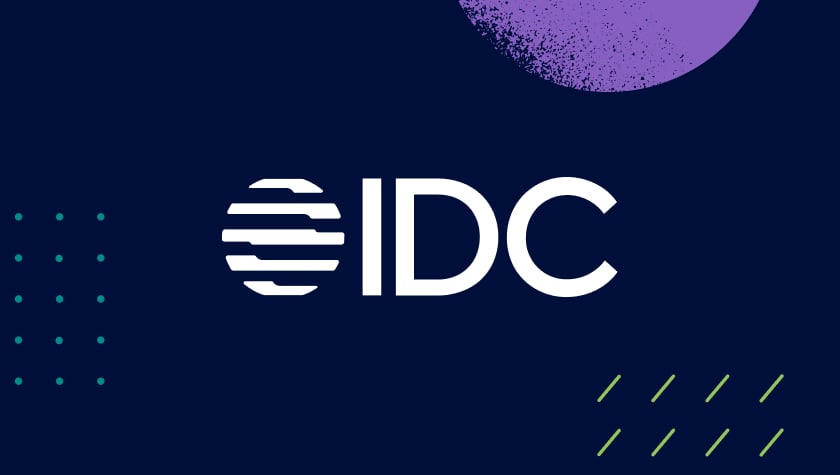
Today’s bank customers have grown accustomed to interacting with their financial institutions (FIs) digitally – from the moment they onboard to the end of their relationship. This is why it’s more important than ever for FIs to ensure that they truly know the person they are dealing with and make digital trust central to any fraud prevention and detection strategy.
Managing Digital Identity in the Digital Banking Age
There are two key reasons why banks and FIs must incorporate digital trust into their fraud prevention strategy. The first is the rapid expansion of digital banking. The second is the rise of faster payments.
- Digital banking expands. Think back a few years, and you’ll remember writing checks, going to the bank, and withdrawing cash from ATMs. Once the global pandemic hit, the shift to digital banking rapidly accelerated. Today’s customers transact on their computers, laptops, mobile web browsers, and mobile apps, to name a few digital banking channels.
Every digital banking channel represents a way for customers to connect to their bank online. Regrettably, digital channels are also an avenue for fraudsters to exploit. Fraudsters’ deceptions are more likely to succeed in the digital era, especially when bank personnel are less likely to meet a customer face-to-face. - Faster payments leads to faster fraud. Instant payments also work in fraudsters’ favor. Payments can move from one bank account to another with just a few taps on a smartphone screen. Savvy fraudsters use the rapid speed of payments to trick victims into sending them money under a variety of deceptions – from authorized push payments (APP) fraud, romance scams, and elderly scams, among other types of fraud. Recovering funds after the recipient gets them is very challenging.
In an environment where banks are unlikely to meet their customers in person and funds can be lost in a matter of seconds, it’s critical for financial institutions to layer digital trust into their digital identity management capabilities. There is no silver bullet or single infallible verification mechanism. Even fingerprint recognition, for example, can be breached.
The 4 Key Components of Digital Trust Fraud Prevention Solutions
Realizing the importance of implementing digital trust for fraud detection and prevention is just the first step for financial institutions. It’s equally important to understand the components of a successful digital trust suite.
1. Malware Defense
Digital trust solutions protect customers from malware that has infiltrated their devices by detecting if an account takeover (ATO) attack is underway or if another actor has hijacked an online session. The solutions interrupt the online session to warn the device owner of the fraud risk. While this briefly interrupts the customer experience, it ultimately spares them from a more serious problem.
2. Device Monitoring.
In addition to monitoring for malware, digital trust also looks for links between a user’s device and other accounts. The solution checks whether the other accounts have any record of criminal activity. This insight enables FIs to determine if the user’s device can be trusted. If the device is new to the user (e.g., logging in from a public computer or a brand new smartphone), the solution can ask if the device should be trusted.
3. Network Monitoring
Digital trust solutions monitor the networks that the user typically accesses. The solution checks if the user is logging in on a different network or if their Wi-Fi connection is suddenly in a different part of the world. It might not be unusual for a particular user to log in from a different country. That’s why it’s important to understand users’ normal behaviors and assess whether shifts in their networks are unusual.
4. Behavioral Analysis
Finally, digital trust solutions also understand how users normally behave by utilizing behavioral biometrics to analyze typical device movements. This includes how a user types, how they hold the phone, and even the pressure they apply to screens. Once these typical behaviors are analyzed, the solution identifies if something suspicious is happening and prevents it from reaching the transaction stage.
Implementing a successful digital trust solution results in more accurate risk alerts, which means fewer false positives. While it doesn’t completely eliminate customer friction, it does introduce the right friction at the right time. Customers will appreciate their bank for taking appropriate actions to protect them and reducing the risk that they will lose money to impersonation scams.
How to Get Started Implementing Digital Trust
While Digital Trust is not the final answer to stopping scams and preventing fraud, it is critical for banks to deliver a strong customer experience and boost customers’ confidence in their brand. Here’s how FIs can implement a strong Digital Trust solution in three steps.
1. Start at Customer Authentication
Onboarding a high-risk individual is the last thing a bank wants to do. That’s why Digital Trust must start at the onboarding stage. After all, preventing a risky customer from onboarding in the first place is easier than offboarding them later. Digital Trust must begin on day one by understanding the customer’s risks and assessing whether they should be onboarded.
2. Personalize Customers’ Warnings
Customers have come to expect more personalized services. Warnings over payments are no exception. Shifting away from generic warnings to offering more personalized messaging will build Digital Trust with customers. Let’s say a customer steps outside their normal patterns (such as paying a new vendor or making a cash withdrawal from an unfamiliar ATM). They will likely be grateful if they believe their bank understands their normal patterns and is looking for extra authentication before approving a transaction.
3. Know Your Customer Across All Channels
As we mentioned earlier, customers transact across multiple digital channels from different devices. It’s critical that FIs understand how customers use their devices at each interaction to understand who they really are. Each digital interaction creates a profile of how the customer normally transacts that evolves over time. With this understanding, FIs can better protect their customers across all digital channels and trust that they are interacting with a legitimate customer, not an imposter.
The days of meeting customers face-to-face are few and far between. But that doesn’t mean banks and FIs can afford to cross their fingers and hope they’re transacting with trustworthy individuals. Digital Trust must be front and center of digital identity and authentication for both banks and customers to transact in confidence. Meeting your customers in person is less common. But that does not mean today’s virtual handshake has to be any more impersonal.
If you are looking for a fraud solution that provides strong digital trust, we’d like to help you. Schedule a demo with us today to see how our experts and technology can help establish digital trust for you and your customers.
Share this article:
Robert Harris
Robert Harris is the Head of Product Marketing at Feedzai and a passionate proponent for fighting fraud and money laundering particularly in financial services. Robert is an accomplished leader in both small and large organizations in identifying opportunities, securing funding, and creatively delivering value in line with project goals. Whether launching new solutions or maximizing value from mature ones has a keen commercial eye and a conviction to both innovate and make prioritization decisions accordingly.
Related Posts
0 Comments6 Minutes
A Guide to Secure, Seamless User Authentication in Payments
Online payments demand a delicate balance between security and user experience. Consumers…
0 Comments7 Minutes
Combating Emerging Scams in the Philippines
The Philippines is witnessing remarkable growth in digital banking. Unfortunately, a…
0 Comments5 Minutes
Feedzai is a Leader in the 2024 IDC MarketScape for Enterprise Fraud Solutions
Exciting news! Feedzai, the world’s first RiskOps platform, is proud to have been named a…

